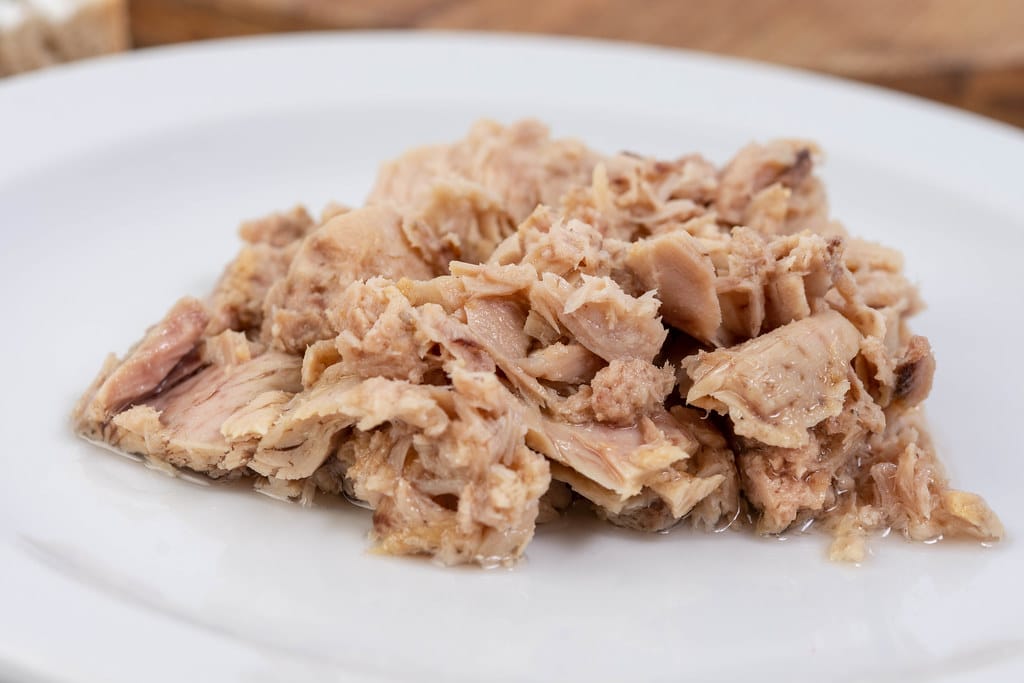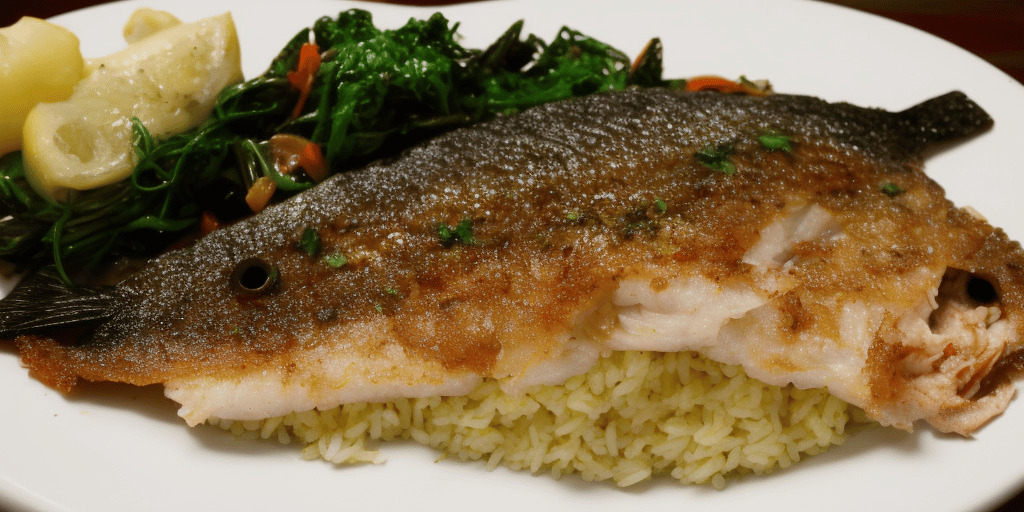Fish lovers adore tuna for its yummy, versatile flavors, opening up a whole world of tasty preparation and eating options.
Sear on the grill or enjoy it in your sushi; tuna is a convenient food that makes meal preparation as simple as possible.
Whether you intend to use fresh or canned tuna, you’re probably wondering how long tuna lasts in the fridge.
Well, let’s find out.
Shall we?
So, how long does tuna last in the fridge?
If properly stored (in an airtight container), fresh tuna can be kept in the refrigerator for up to 2 days.
Similarly, if continuously refrigerated, an opened canned tuna will stay fresh for about 3-4 days.
This article will discuss the basic guidelines for storing tuna in the fridge.
It will also explain the health benefits of tuna and why you should add it to your diet.

How long is canned tuna good for once opened?
An unopened can of tuna can last in your pantry for years as long as you keep an eye on the expiry date.
Once opened, you should store it in an airtight container in the fridge for up to 5 days.
You should also keep it at room temperature and away from heat sources.
You can also store it in a vacuum-sealed pouch to maximize the shelf life.
To further extend its longevity, place it inside covered airtight containers or heavy-duty freezer bags and freeze.
Frozen tuna will remain at peak quality in the freezer for up to 3 months.
For canned tuna that has been defrosted in the fridge, you should store it for an additional 3-4 days before using it.
However, if the canned tuna has been thawed in the microwave or cold water, it’s best to eat it immediately.
To check if canned tuna has gone stale, read the expiration date on the can.
The longer the date has passed, the more likely your tuna fish will be bad.
You can also tell by the way it smells or looks.
If the canned tuna develops an off-putting odor, flavor, or appearance, or if mold appears, it should be tossed away immediately.
Throw away all canned tuna from cans or pouches that are rusty, tampered with, leaking, bulging, or dented.
How to safely store tuna salad in the fridge
If you intend to store tuna salad for a few days, you can keep it in the fridge for about five days.
Here’s how you can store your leftover tuna salad:
- Transfer all your leftover tuna salad to an airtight container, whether store-bought or homemade.
- Place the tuna salad on the back of the shelf rather than near the door as it’s where the temperature is more stable.
- Your leftover tuna salad will stay fresh for up to 5 days.
How long should tuna salad be kept in the freezer?
If you need to keep your leftover tuna salad for longer, you can freeze it for up to 6 months.
- To freeze tuna salad, store it in a freezer-safe plastic bag or container.
- Split the salad into smaller portions if you have a large batch, and store each part separately in a freezer bag. This will help speed up the thawing process and be a more accessible ready-to-eat portion.
- If using a freezer bag, squeeze out as much air as possible to prevent freezer burn. However, if you’re storing it in plastic containers, secure the lid with freezer tape to keep the air out.
- Label the freezer bags or containers with the date you made the salad, then place them in the freezer.
Health benefits of tuna fish
It’s great for your heart
The high percentage of omega-3 fatty acids in tuna fish may help bring balance into the blood vessels, reducing the cholesterol levels in the arteries.
Lower cholesterol in arteries reduces the rates of cardiovascular disease, including heart attacks.
Additionally, it often replaces foods with high saturated fat content, lowering the risk of heart disease.
It reduces your blood pressure
Tuna is rich in potassium which may help lower blood pressure significantly.
Combining this element with omega-3 fats brings an anti-inflammatory effect to the cardiovascular system.
Eating more tuna may help to lower your blood pressure and, subsequently, your risk of heart attacks, heart disease, and strokes, as well as conditions like atherosclerosis.
However, ensure you choose the lower-sodium varieties.
It may boost your immune system
Tuna fish is one of the best dietary sources of vitamin D.
Eating just 3 ounces of canned tuna yields as much as 50% of the recommended daily dose.
Vitamin D is essential for bone health, strengthening the immune system against disease, and ensuring excellent growth in children.
It’s also rich in manganese, zinc, vitamin C, and selenium, antioxidants known for boosting the immune system.
These antioxidants are responsible for fighting free radicals, the by-products of metabolism on the cellular level, which can cause diseases like cancer.
It boosts your circulation
Tuna is a rich source of iron and the B-complex vitamins that play an essential role in red blood cell formation.
Iron boosts blood circulation, improving the oxidation of the body organs to function efficiently.
The high intake of iron and vitamin B strengthens the blood cells.
It lowers triglycerides
If you have high triglyceride levels, you may lower them by incorporating tuna into your diet.
Tuna helps lower LDL (bad cholesterol) and triglycerides levels while reducing the rate at which plaque builds up in your arteries.
It improves your skin health
Tuna contains trace mineral, which prevents damage to blood cells due to intoxication and the healthy state of the body.
It’s also a great source of selenium which helps to preserve the protein elastin, allowing the skin to stay tight and smooth.
Similarly, the antioxidants in tuna also help prevent skin cell damage from UV exposure.
It prevents stroke
Both canned and fresh tuna are healthy sources of omega-3 fats, responsible for lowering blood pressure and preventing stroke.
Consumption of tuna, especially among older adults, is associated with a lower risk of ischemic stroke and the risk of cognitive decline.
You can lower the risk of stroke by 30% with only five servings of tuna a week.
Tuna fights kidney disease
The potassium and sodium content in tuna helps with the fluid balance and regular functioning of the kidneys.
When your body maintains a fluid balance, the kidneys function properly, lowering the chances of developing chronic kidney disease.
However, you should consult your dietitian before adding tuna to your diet if you have severe kidney disease.
This is because tuna contains potassium and phosphorus, which can build up and become toxic for people with damaged kidneys.

Pan-seared tuna with avocado, soy, ginger, and lime recipe
Ingredients
- 2 big handfuls of fresh cilantro leaves, finely chopped
- 1/2 jalapeno, sliced
- 1 teaspoon of grated fresh ginger
- 1 garlic clove, grated
- 2 limes, juiced
- 2 tablespoons of soy sauce
- Pinch sugar
- 1/4 cup extra-virgin olive oil
- 1 (6-ounce) block sushi-quality tuna
- 1 ripe avocado, halved, peeled, pitted, and sliced
Directions
- In a mixing bowl, combine the cilantro, jalapeno, ginger, garlic, lime juice, soy sauce, sugar, salt, pepper, and two tablespoons of olive oil. Stir the ingredients together until well incorporated.
- Place a skillet over medium-high heat and coat with the remaining two tablespoons of olive oil. Season the tuna generously with salt and pepper. Lay the tuna in the hot oil and sear for 1 minute on each side to form a slight crust.
- Pour 1/2 of the cilantro mixture into the pan to coat the fish. Serve the seared tuna with the sliced avocado and the remaining cilantro sauce drizzled over the whole plate.
FAQs
Q: How long is tuna and mayo good for in the fridge?
A: If you store your tuna and mayo sandwich in an airtight container and keep it in the fridge, it should be safe to eat between 3 to 5 days.
However, if it sits for longer than two hours on the counter, it may not be safe to eat anymore and thus should be discarded.
Q: How long does tuna last in refrigerator?
A: For fresh tuna, if stored correctly in an airtight container, it can last up to 2 days.
However, if appropriately wrapped and stored in the fridge, cooked tuna will last for 3-4 days.
Q: How long is homemade tuna salad good for?
A: Homemade tuna salad can last up to 5 days in the fridge if stored properly.
However, you shouldn’t let it sit out too long for a safe eating experience while preserving its quality.
In summary
Tuna, whether canned or fresh, can be safely stored in the fridge as long as you check the best before date first before refrigerating it.
However, you shouldn’t rely too much on the expiration date as it’s a manufacturer’s estimate of how long the fish will remain at peak quality.
Ensure your cooked tuna doesn’t go for more than four days, and two days for fresh tuna, as it may begin to look very dry and off-color.
You may also risk getting a bacterial infection in the process.

Pan-seared tuna with avocado, soy, ginger, and lime recipe
Equipment
- 1 mixing bowl
- 1 Skillet
Ingredients
- 2 handfuls fresh cilantro leaves finely chopped
- 1/2 jalapeno sliced
- 1 teaspoon ginger grated fresh
- 1 garlic clove grated
- 2 limes juiced
- 2 tablespoons soy sauce
- Pinch sugar
- Sea salt and
- Black pepper freshly ground
- 1/4 cup olive oil extra-virgin
- 2 ounce tuna block sushi-quality
- 1 ripe avocado halved, peeled, pitted, and sliced
Instructions
- In a mixing bowl, combine the cilantro, jalapeno, ginger, garlic, lime juice, soy sauce, sugar, salt, pepper, and two tablespoons of olive oil.
- Stir the ingredients together until well incorporated.
- Place a skillet over medium-high heat and coat with the remaining two tablespoons of olive oil.
- Season the tuna generously with salt and pepper.
- Lay the tuna in the hot oil and sear for 1 minute on each side to form a slight crust.
- Pour 1/2 of the cilantro mixture into the pan to coat the fish.
- Serve the seared tuna with the sliced avocado and the remaining cilantro sauce drizzled over the whole plate.
Video
Nutrition
- 25 Homemade Air Fryer Breakfast - July 5, 2025
- 25 Simple 4th Of July Side Dishes - July 5, 2025
- 24 Simple Barley Recipes - July 5, 2025


